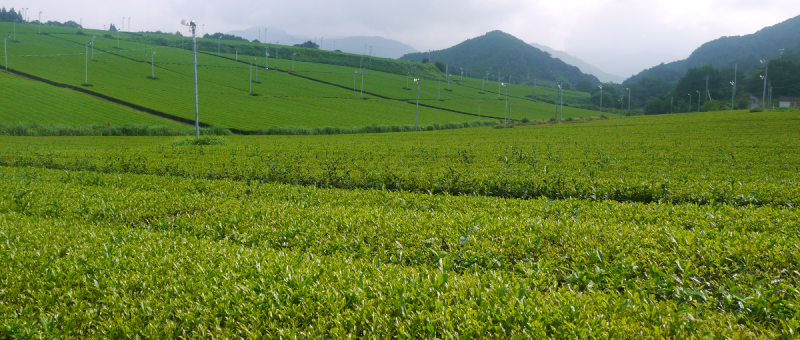
Nestled in the hills above rural Hidaka-mura (日高村) in Kōchi prefecture lies the Kiriyama Tea Farm (霧山茶業組合) run by the Nakayama (my in-laws!) and Yano families.
Formerly Western Japan’s largest tea farm and a contributor of leaves to the very popular Itoen Oi-ocha blended green tea (available at all good vending machines and conbinis!) Kiriyama also produces it’s very own range of delicious teas!
From wikipedia:
Green tea is processed and grown in a variety of ways, depending on the type of green tea desired. As a result of these methods, maximum amounts of polyphenols and volatile organic compounds are retained, affecting aroma and taste. The growing conditions can be broken down into two basic types — those grown in the sun and those grown under the shade. The green tea plants are grown in rows that are pruned to produce shoots in a regular manner, and in general are harvested three times per year. The first flush takes place in late April to early May. The second harvest usually takes place from June through July, and the third picking takes place in late July to early August. Sometimes, there will also be a fourth harvest. It is the first flush in the spring that brings the best-quality leaves, with higher prices to match.
My favouite Kiriyama tea is their Genmai-cha (玄米茶) this is a handcrafted mix of toasted brown rice and tea leaves, which results in a light, slightly nutty tea which is best drank cold.
Other varieties include:
- Sen-cha (煎茶 – decocted tea)
The first and second flushes of green tea made from leaves that are exposed directly to sunlight. This is the most common green tea in Japan. The name describes the method for preparing the beverage.
- Jōsen-cha (上煎茶 – superior decocted tea)
Much the same as Sen-cha but with selected high-quality leaves.
- Ban-cha (番茶)
Lower grade of Sen-cha harvested as a third- or fourth-flush tea between summer and autumn.
- Hōji-cha (焙じ茶)
A green tea roasted over charcoal (usually Ban-cha).
- Kuki-cha (茎茶)
A tea made from stems, stalks, and twigs. Kukicha has a mildly nutty, and slightly creamy sweet flavor.
- Shin-cha (新茶)
First flush tea. The name is used for either Sen-cha or Gyokuro.

Kiriyama (霧山) means misty mountain and if you are able to understand Japanese then you can find out more information about the company and their wares on their website: www.kiricha.com


Comments
No comments yet. Be the first to react!